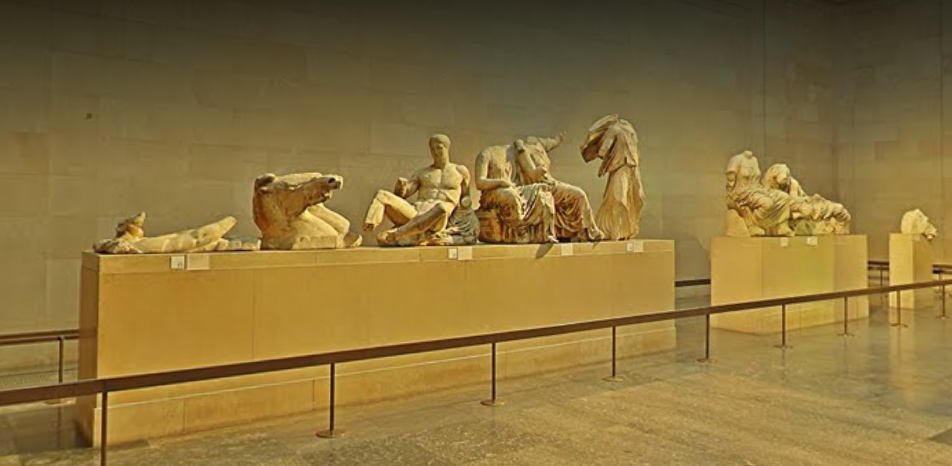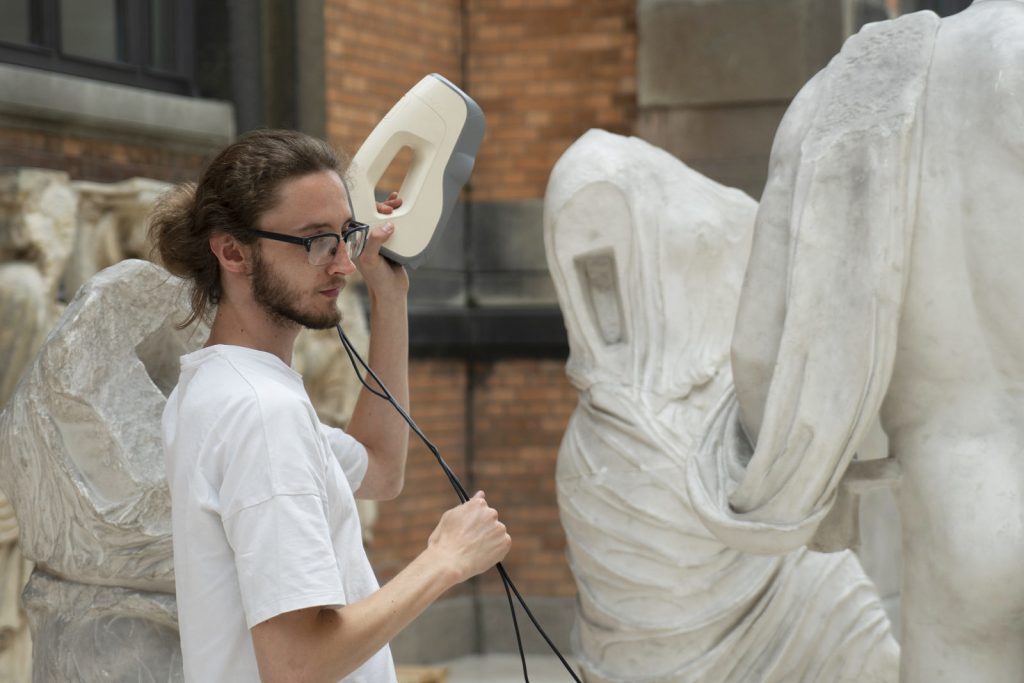The British Museum has reportedly denied the Institute of Digital Archaeology (IDA) permission to 3D scan the Parthenon Marbles and could now face court.
The institute put in a request to the museum to scan the marbles, also known as the ‘Elgin’ Marbles, in order to create high-quality replicas that could mean the originals could be returned to Greece.
However, the museum rejected the request “without any explanation”, and the IDA’s Founder and Executive Director Roger Michel has now said the institute will take legal action to appeal the decision.

The Parthenon Marbles Restitution debate
The Elgin Marbles are 2,500-year-old sculptures that were removed from the Parthenon in Athens by Thomas Bruce, the 7th Earl of Elgin, 200 years ago after being sold to him by the city’s Turkish occupiers. The decision from the British Museum is the latest in a restitution debate that has spanned centuries, and one that has been on the agenda of the UNESCO Intergovernmental Committee for Promoting the Return of Cultural Property to its Countries of Origin (ICPRCP) for almost 40 years.
In 2021, a resolution issued by the ICPRCP acknowledged the “legitimate and rightful demand” of Greece for the return of the Parthenon Sculptures, and in February experts believed the British Museum had made a “massive shift” in its policy regarding the loaning of the Parthenon Marbles Greece.
The IDA, which is a partnership between Oxford University and Harvard University, submitted its request to 3D scan the Parthenon Marbles on the 8th February, in a move that multiple news outlets reported could bring the long-held dispute between Greece and the British Museum over the sculptures to an end.
However, the museum appears to have denied the request without explanation, which Michel has deemed “arbitrary and irrational.”
3D scanning the Parthenon Marbles
The IDA planned to create replicas of the 32 sculptures using 3D scanners, from which 3D models would be created and then fed into a robotic sculpting machine. The robot would then use real chisels to create a replica using marble from the same quarry as the originals.
The IDA website says the replicas could “allow the British Museum to fulfill – indeed, significantly expand – its educational mission, while promoting ethical stewardship of important heritage objects.”
The IDA submitted a request to digitally scan one of the marbles as a proof-of-concept, however on Monday this was turned down. Michel told the Telegraph he would take the case to court as a matter of principle, saying the museum was “just too snobby to give [the marbles] back to the Greeks.”
Jon Beck, Founder of London-based cultural heritage project Scan the World, gave his thoughts on the British Museum’s decision.
“I’m hardly surprised that this toxic institution, which relies so heavily on its flimsy backbone of a dated British legal system, is snubbing the thought of something that would bring the museum into the 21st century,” he said. “For a museum that is asking for one billion pounds of funding to get a facelift, I’m shocked that they are not open to discussing new means of monetization and fairness in their collections. They happily work with corporate 3D partners who look to join in the monetization and closing of digital heritage, which is surprising for a place that claims it is the ‘museum of the world’.
“Our community has scanned the marbles, and we will aim to remove any reference to the British Museum’s shocking work in caring for them.”
Scan the World uses a variety of 3D scanning techniques to capture art from around the world and make it freely available to the 3D printing community. The project has hit a number of significant landmarks in its history, having amassed more than 17,000 objects in its 3D printable collection.
The firm has previously carried out projects for the Victoria & Albert Museum, and has most recently teamed up with Google Arts & Culture to expand its collection of open-source 3D printable art.

3D scanning artifacts
3D scanners have proved a useful tool in the digitization of relics, ancient artifacts and historic sites, as well as replicas of treasured statues and historical sculptures, including a digital twin of Michelangelo’s David, in the past.
In addition to Scan the World’s efforts, archivists at the Texas through Time Museum have previously used 3D scanning technology to digitally preserve the fossilized skeleton of an ancient predator, while Spain’s National Archaeological Museum has used 3D scanning to create a replica of the San Pedro de las Duenas Arch.
More recently, a 19th-century boat discovered in Sydney was unearthed, scanned and a 3D printed replica displayed in the Australian National Maritime Museum, and Fraunhofer IGD developed an upgrade version of its CultArm3D scanner specifically geared to accurately capture and recreate 3D models of museum exhibits.
Subscribe to the 3D Printing Industry newsletter for the latest news in additive manufacturing. You can also stay connected by following us on Twitter and liking us on Facebook.
Looking for a career in additive manufacturing? Visit 3D Printing Jobs for a selection of roles in the industry.
Subscribe to our YouTube channel for the latest 3D printing video shorts, reviews and webinar replays.
Featured image shows the Parthenon sculptures in the British Museum’s virtual gallery. Image via Google Arts & Culture.



